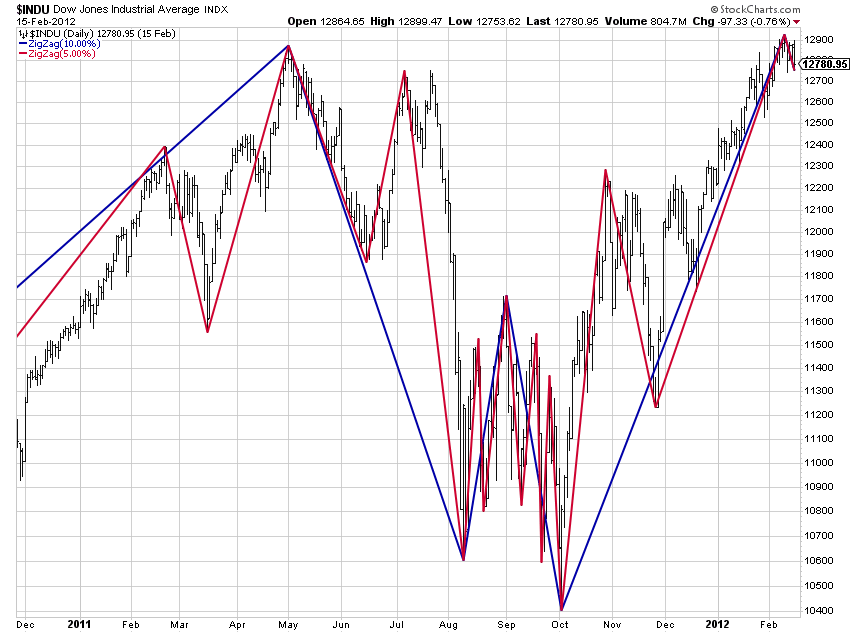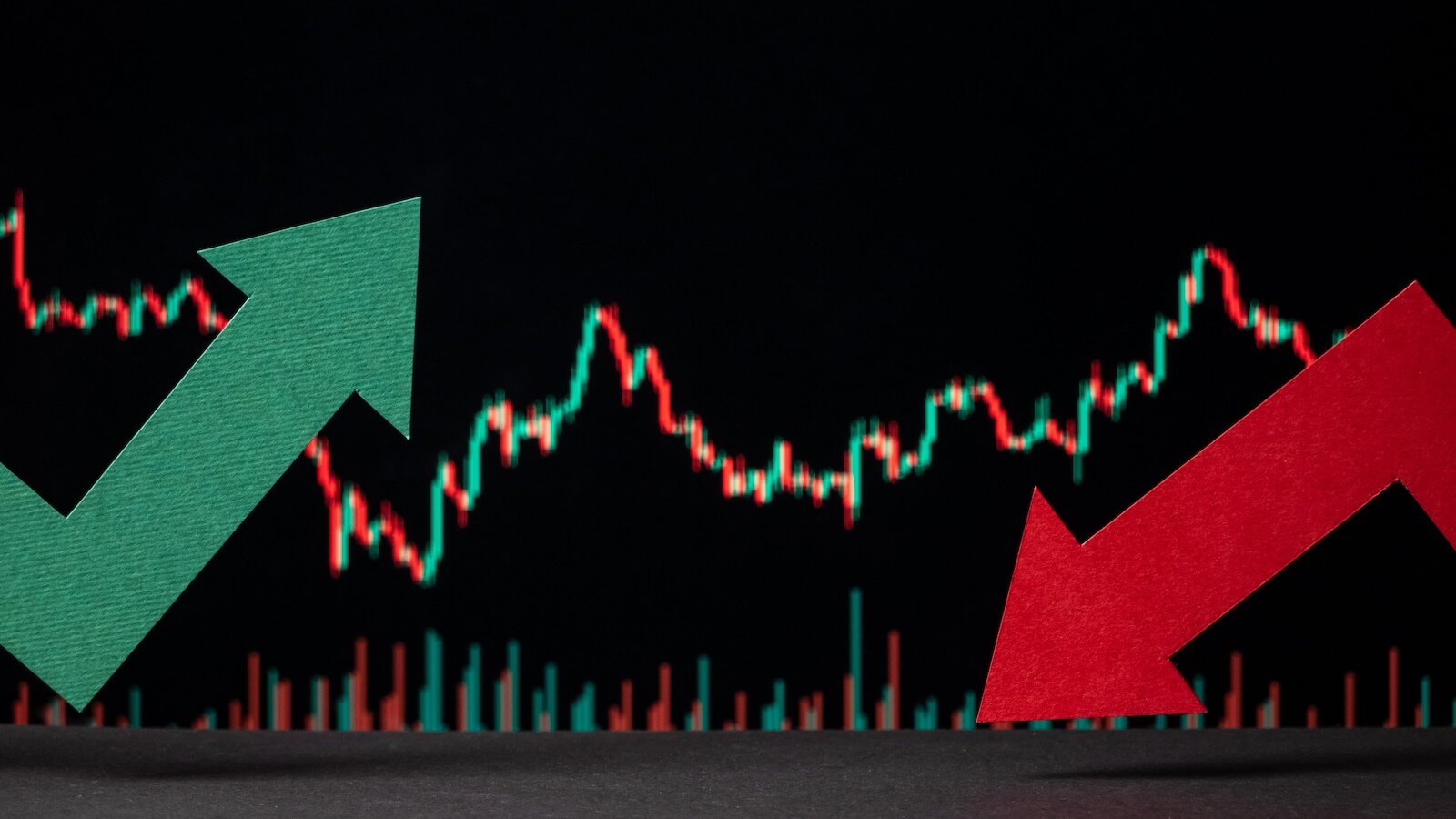 Well, what do you think of 2018 so far? As a trend follower, it has been difficult. Reminds me of 2011, which happened to be the worst year my 25-year-old model has ever had. Chart A shows the Dow Jones Industrial Average for all of 2011 with some data before and after that. The blue filtered wave (zig-zag) is showing all moves of 10% or greater and the red filtered wave shows moves of 5% or greater. When you cannot see the blue line, it is because it is the same as the red line. The blue shows there were 2 big down moves before the market recovered. However, when you reduce the moves to 5%, which are still moves that would take me to cash, there were 8 such moves in 2011, or 4 times more if you like that sort of thing. It sure does make it sound worse, doesn’t it? Trend following got beat up, customers were calling, it was frustrating. Those were the customers who had not been with us very long. Our long-term clients were playing golf and rarely checked into their account because they fully grasped what we did. Protecting clients from devastating bear markets has a cost; under performance in bull markets. As you age, trust me, it is worth it.
Well, what do you think of 2018 so far? As a trend follower, it has been difficult. Reminds me of 2011, which happened to be the worst year my 25-year-old model has ever had. Chart A shows the Dow Jones Industrial Average for all of 2011 with some data before and after that. The blue filtered wave (zig-zag) is showing all moves of 10% or greater and the red filtered wave shows moves of 5% or greater. When you cannot see the blue line, it is because it is the same as the red line. The blue shows there were 2 big down moves before the market recovered. However, when you reduce the moves to 5%, which are still moves that would take me to cash, there were 8 such moves in 2011, or 4 times more if you like that sort of thing. It sure does make it sound worse, doesn’t it? Trend following got beat up, customers were calling, it was frustrating. Those were the customers who had not been with us very long. Our long-term clients were playing golf and rarely checked into their account because they fully grasped what we did. Protecting clients from devastating bear markets has a cost; under performance in bull markets. As you age, trust me, it is worth it.
 Chart A
Chart A
Buy and hold faired well other than the sleepless nights and nagging fear. Remember, 2011 was only a little more than 2+ years after the financial meltdown which took the Nasdaq Composite down over 50% and the Dow Industrials down over 45% and eventually started up on March 9, 2009. You can see in Chart B the performance from October 9, 2007 through 2011. The bear recovered in 2011, but shortly thereafter we experience exceptional volatility and poor trend following performance. In fact, you can see that the recovery just got back to even and not much more. Oh, did I mention that the model was only down 5% in 2008? That is what a rules-based trend following model does; it protects against the devastation of bear markets and gets a little beat up during whipsaw periods. Once you understand and accept that, your golf game will improve.
 Chart B
Chart B
Now to the current market. Here we go again! We don’t know yet how this will play out. Will it develop into a bear market or remain a period of exceptional volatility? Hey, you won’t find the answer to that question on financial television.
 Chart C
Chart C
The big decline and volatility in late 2011 were eventually resolved to the upside. How will 2018 be resolved? Trust me, absolutely NO ONE knows the answer to that question. This is the value of a rules-based trend following system that removes that horrible human frailty called emotion. My model while often underperforming in the good bull moves, has put me into cash since late September 2018. While I prefer making money in the equity market; it is also very comforting to be earning the small pittance from a money market fund while prices are plummeting. A small percentage gain is better than a huge loss. The other thing I am preparing for is that eventually the market will hit bottom and start back up. My trend model will lag significantly depending upon the sharpness of the bottom. That will be frustration. Riding a bear down much more would have been devastating.
No one knows the future! In a good bull market there are many pullbacks to flush out the short timers and cleanse the market. Similarly, a good bear market will have cleansing rallies to flush out the bottom pickers and short timers. Remember, when you see a strong up move like we had on December 26th, someone was also in there selling at the higher prices. If you always keep that in mind when watching market moves, it will help understand them a little better. For every buyer there is a seller and vice versa.
Dance with the Trend,
Greg Morris





